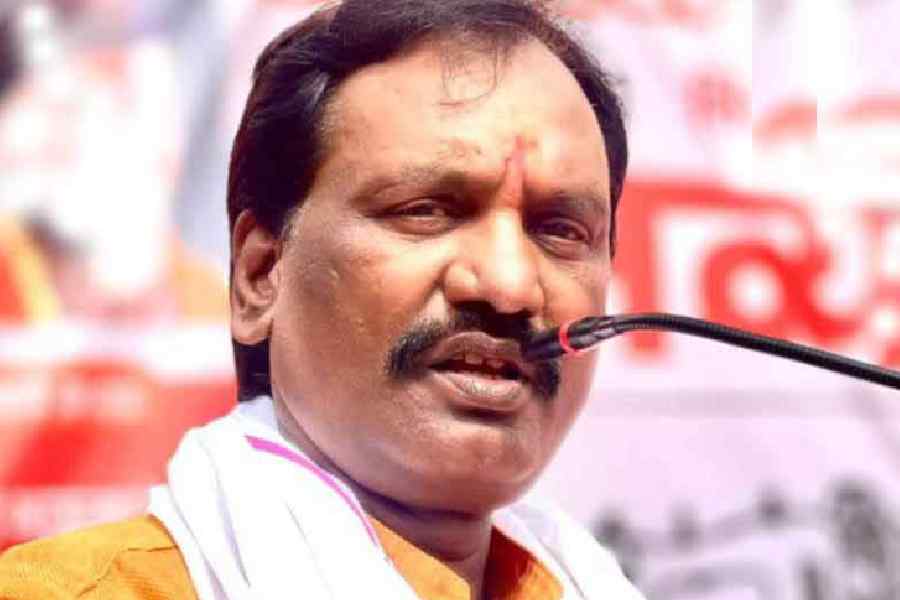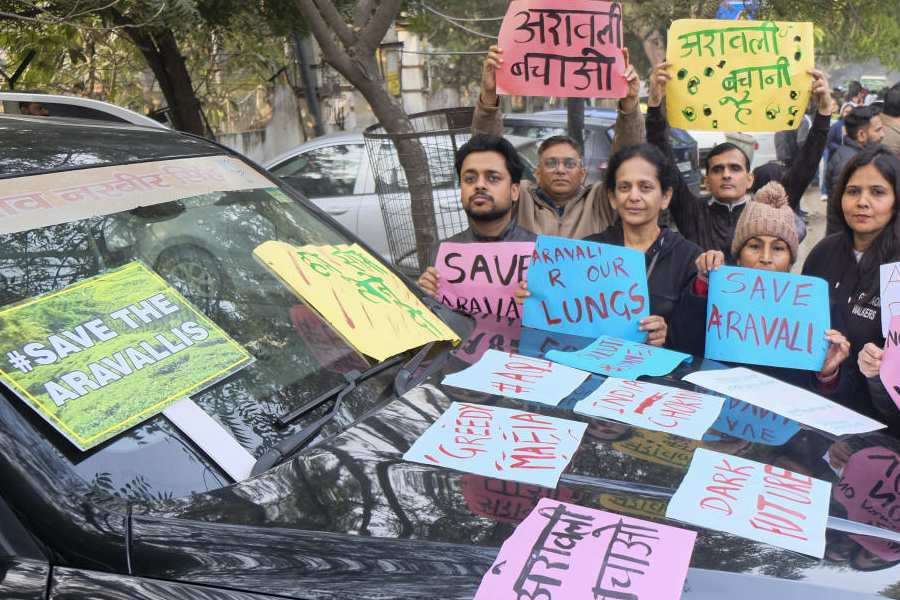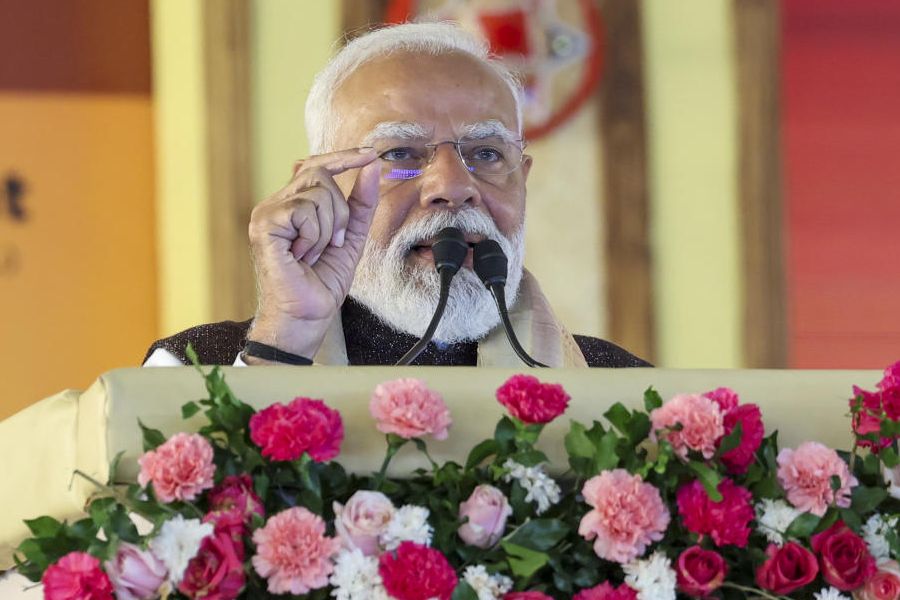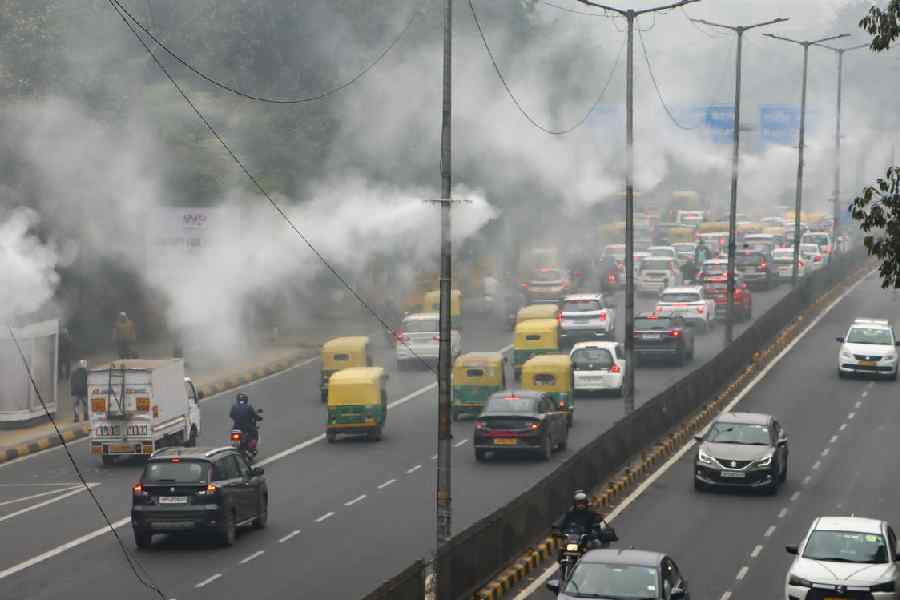 |
 |
 |
 |
 |
| (From extreme top) The Laxmi-Narayan statue in front of the museum at Kenduvilva, grass flowers inside the garden, one of the 12 “kunjs” (groves) built inside the Jayadev Vatika, the 14th century Nrusimhanath Temple at the village, a site believed to be the birthplace of the poet. Telegraph pictures |
| Kenduvilva, birthplace of poet Jayadev, who wrote Gitagovinda |
| 30km by road from Bhubaneswar (two roads - one from the Sai Temple end and another from NH-5 near Naharkanta) |
| Jayadev Vatika, museum, Padmavati Temple, Shiva Temple, Tirumalla Mutt, Nrusimhanath Temple, Jayadev's ancestral places, excavated sites, Prachi Valley and medicinal garden |
| Accommodation inside the vatika by tourism department. Three rooms (one room for Rs 500 for two). Food is available. One can also stay in budget or luxury hotels in Bhubaneswar |
| Bhubaneswar (35km) |
| Bhubaneswar (40km) |
Bhubaneswar, April 3: The touch of the famous poet of the 12th Century reverberates here. For any visitor to Kenduvilva — the birthplace of Gitagovinda’s creator Jayadev — the ambience is replete with both sacred and profane expressions of his depiction of love, in the purest form.
Right from the kunjas (groves) to the flowering and medicinal plants, the ancient monuments and the excavated sites, the artefacts in the museum and the Laxmi-Narayan statue near the entrance fountain, the touch of love is evident everywhere.
Away from the busy work schedule in the city, when you travel towards the historically rich Prachi river valley to reach Kenduvilva, around 30km from Bhubaneswar, the Jayadev Vatika, sprawling over about 17 acres, welcomes you with its rich greenery and valley of flowers. The vatika has 12 groves, corresponding to the 12 sections found in Gitagovinda.
The birthplace of the poet has been transformed into two beautiful landscapes by the state's tourism and culture department in association with Jayadev Foundation Trust. As you advance into the garden and begin to immerse in the love of the creator of the great work. You begin to realise why Jayadev’s work, though smaller in magnitude, is rightly compared to the work of Kalidasa, the celebrated poet of the Gupta era.
In Kenduvilva, while Jayadev Vatika is spread over 17 acres, another medicinal plant garden nearby is spread over five acres. Both are part of the Jayadev Heritage Project. A third campus of the project is under construction near the vatika.
Executive trustee, Jayadev Foundation Trust, Bhubaneswar, Prafulla Chandra Tripathy said: “The Gitagovinda is not just a famous work in Sanskrit literature. Apart from endearing itself to the connoisseurs of ornate poetry, it has became an iconic fundamental of the Vaishnavite faith for its ability to inspire devotion. The source of the devotional inspiration is the love between the divine and the human — Krishna, the supreme Vaishnava deity, and his consort Radha. Of course, the love is depicted through such frank eroticism that it has attracted criticism. However, its lyricism and mellifluous poetic sweep has earned an admiration which has lasted more than eight centuries.”
The extent of the popularity of the work can also be gauged from the number of illustrated manuscripts - which themselves are the finest examples of the Indian painting tradition — that are available in Orissa, where it was composed.
“No other poet of medieval India can claim to have achieved such abiding immortality and imperishable distinction as Jayadev. Though the work is considered as an invaluable gem in Sanskrit literature, it is being translated into several other languages like English, French, German, Russian and many others,” he added.
According to Tripathy, the village was originally located in Prataprudrapur gram panchayat in Khurda district on the bank of river Prachi. Today, it is a separate gram panchayat named after the poet. “The mainspring of Indian religious faiths flourished here in the Prachi valley leaving behind temples, sculptures, monastic complexes, inscriptions and strong literary traditions. The poet was born and brought up in such a favourable situation and had a unique opportunity to imbibe the quintessence of all religious efflorescence,” he said.
While a priest performs rituals near a “neem” tree saying it was the birthplace of the poet, a memorial building is dedicated to the poet, which has a bust of him and some other religious statues.
Padmavati Temple
The most interesting thing is a 6-7th century Padmavati temple and a Shiva temple inside the vatika.
The Padmavati temple was discovered in 1964 in utter ruins. It was conserved in 1971 by the state archaeology department.
Recently, a portion in front of the temple has undergone excavation resulting in the recovery of many artefacts and a beautiful pillar. A writing instrument used to inscribe on palm leaves was also discovered from near the site.
Near the excavated site and Padmavati temple, there is an ancient Shiva temple. Bright lights have been installed to highlight the two structures at night.
Tirumalla Mutt
While walking down the streets of the Kenduvilva village, one can notice this ancient monument. Locally known as Trimali Mutt, the structure is located on the northern side of the Puri temple and a Tirumal Mahal found near Khurda. This happens to a branch of a mutt in Puri and was renovated and conserved by the Orissa State Museum along with the Nrusimhanath Temple towards the end of the village and the Padmavati temple.
According to historians, Laxman Suri, the court pandit of Tirumalla Rai, the ruler of Vijayanagar empire, had written the preface of Gitagovinda. Under Suri’s influence, Rai established the mutt in Puri and Kenduvilva. Pilgrims from the south stayed here.
Museum
Many fragmented sculptures, architectural findings, along with pottery remains have been found in three different mounds near the Kenduvilva village. These three mounds are Praharaj Diha, Chandan Mandap and Gokula Diha. From the preliminary analysis of the findings from the surface, it is revealed that the site was rich in antiquity and culture from the 1st century AD. The exposed evidence has indicated the development of three stages of building activities from the early Christian century.
The material unearthed in the course of the excavation has revealed the existence of a potter's hearth and a well-furnished drainage system made of burnt earthen pipes. So far, the discovered cultural deposits hint at an early date and the pottery was mainly made of red clay and handmade pottery. Other items like terracotta sling balls, hopscotch, beads, iron nails, stone hammer and iron axe were found. Further excavation would throw more light on the history and culture of the site. The museum was established to preserve and showcase the materials found in the region. The collections are mainly sculptures of the Vaishnavite cult. The other important collections are terracotta images and recently excavated materials from the village.
Vatika
The Jayadev Vatika consists of 12 groves that depict the various descriptions of the poet in the different sections of Gitagovinda. “There is a plan to install 12 metal statues 4’6” high in the groves. The groves also represent the 12 Madhav Peethas (sacred places of Vishnu) in the Prachi Valley.
Flora and fauna
The Jayadev Vatika in Kenduvilva is not just a place to see flowering plants. The rich collection of plants also includes medicinal plants and rare one like rudrakshya' which, according to Ayurveda, has power to control high blood pressure. It is a beautiful place with various types of wild flowers and grass. According to the employees of the tourism and cuture department, the place has also become a favourite place for the film producers to shoot their songs and romantic sequences.
Laxmi-Narayan
The beautiful statue of Laxmi-Narayan, made of black granite in front of the museum, is a replica of the statues in places called Kalapanchana and Chauraashi. The statue is eight feet high inside the vatika while the original ones are around 7km away.
Tourism potential
The Jayadev Vatika in Kenduvilva is frequented by tourists from states like Bengal, Andhra Pradesh, Punjab, New Delhi, Gujarat, Kerala and Tamil Nadu. However, most of them come from Bengal as many visit this place with their package plan for Puri and Bhubaneswar. The place is connected to Bhubaneswar by two roads, so budget travellers come in trips by buses and cars. Every year, lakhs of tourists (both local and from other states) visit the place.
The night and evening hours are pleasant in the vatika because while taking a walk there, one can hear the slokas of Gitagovinda. The lights also give the entire area a new look. There is also a light-and-sound show on Jayadev.
Researchers working on poetry and especially love poems, come to Kenduvilva in large numbers. The tourist accommodation centre here has three rooms, each of which can accommodate two persons. Each room costs Rs 500 a night. Food is available in the canteen on the same complex.











